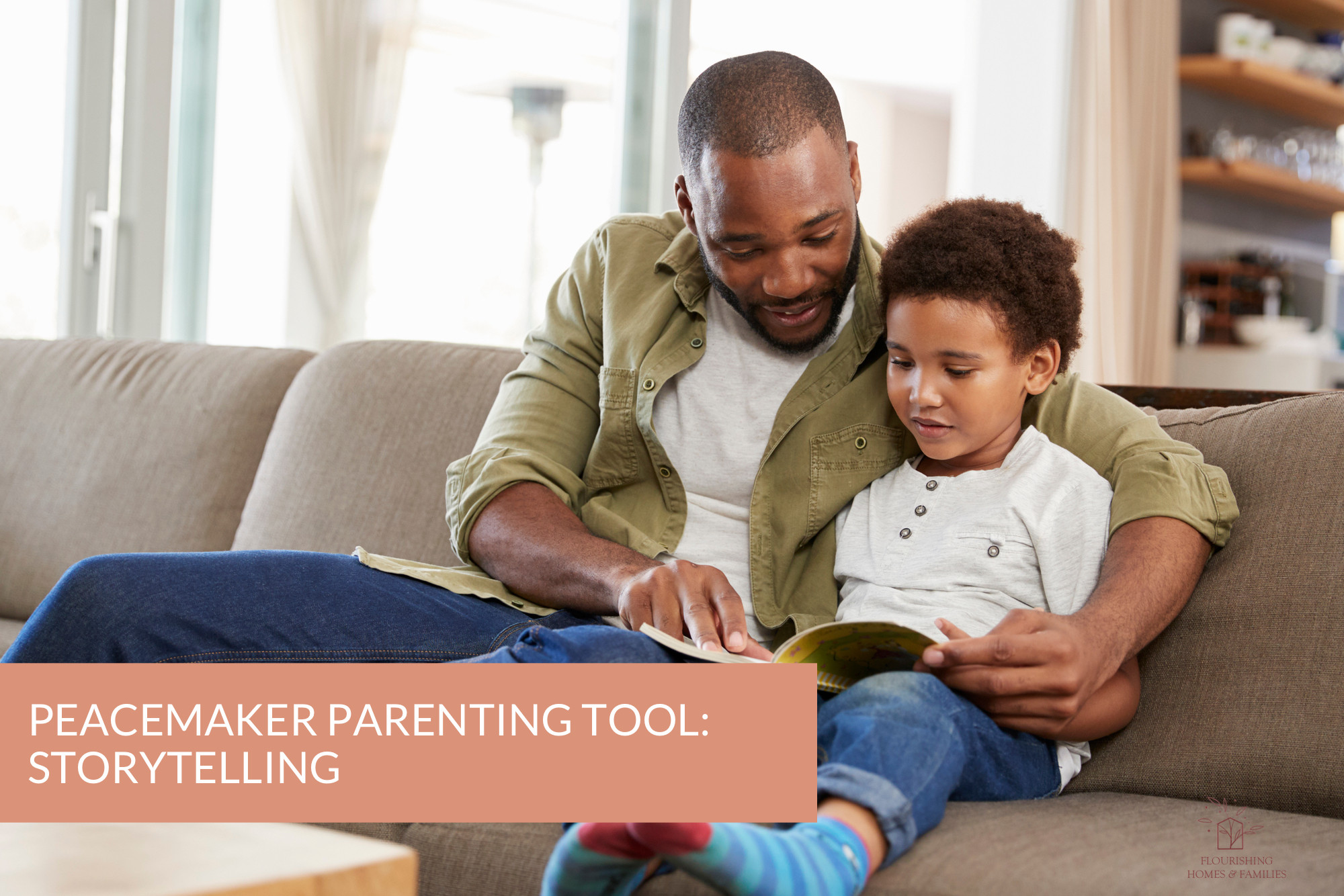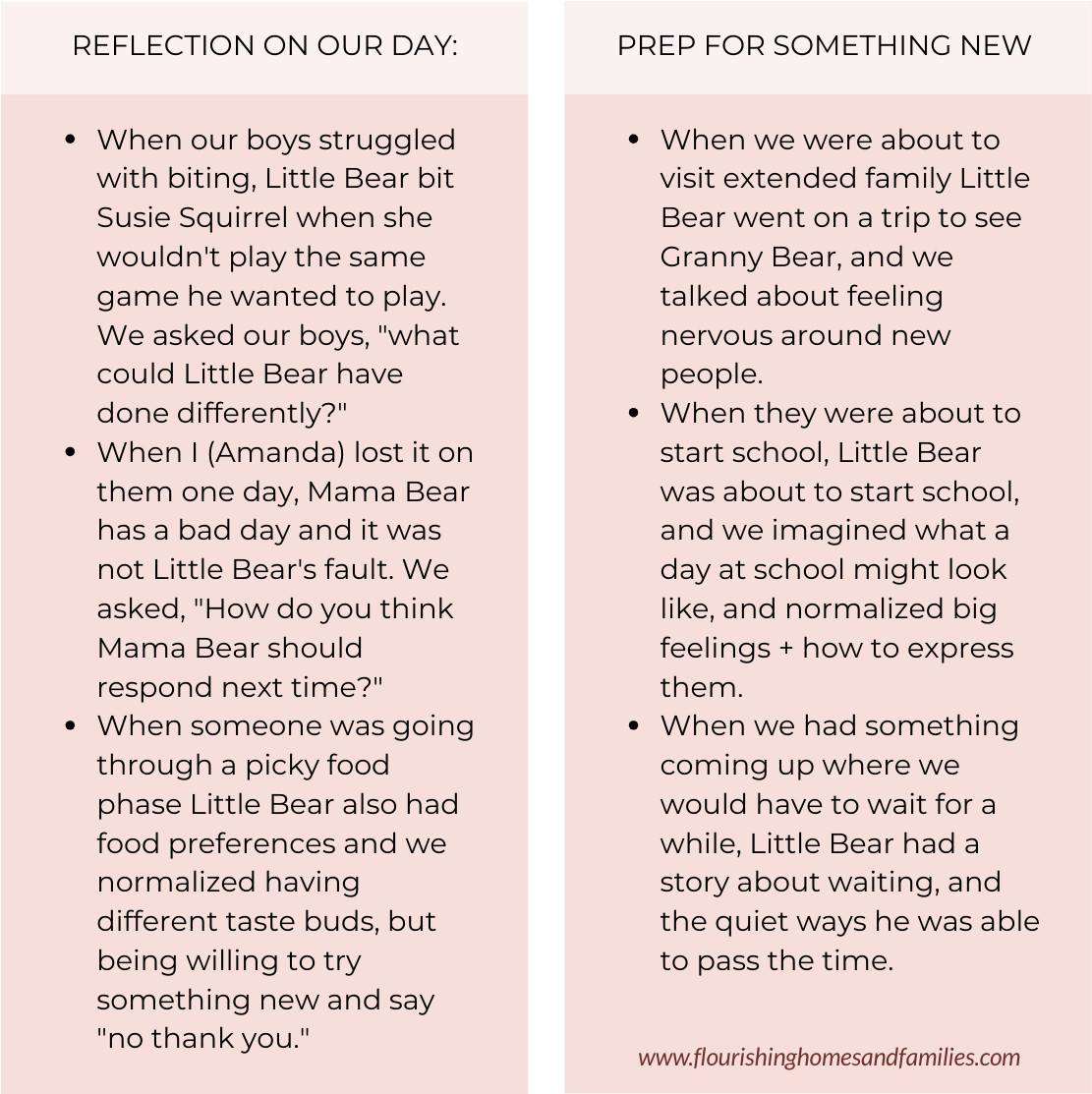
Storytelling is a powerful tool to help children learn empathy, understand another person's perspective, process hard experiences and feelings, and brainstorm different ways to respond to specific situations. It can also be used to get an inside look at how your child might learn best, or how they want to be treated by you when they mess up.
THE SCIENCE OF STORYTELLING
Humans are natural storytellers and listeners, and this inclination is deeply ingrained in our biology and psychology and is part of God's beautiful design. Several key reasons explain why stories resonate with us and are so effective in conveying lessons:
- Emotional Connection: Stories often elicit emotions, and these emotional connections help us remember the content more vividly. This is because stories engage both the logical and emotional parts of our brains.
- Neurological Activation: When we hear a well-told story, various parts of our brain become active, including those responsible for language processing, sensory experiences, and even motor functions. This activation increases our engagement with the material.
- Mirror Neurons: These neurons in the brain fire when we observe someone performing an action. When we listen to a story, our mirror neurons enable us to put ourselves in the shoes of the characters, making the story relatable and memorable.
- Retention and Recall: Studies have shown that information presented in a narrative format is more likely to be retained and recalled than data presented in a dry, factual manner. This is because stories create a mental "hook" for memories to latch onto.
TEACHING CHILDREN IMPORTANT LIFE LESSONS
Storytelling can be a potent tool for teaching children critical life lessons. Whether it's honesty, kindness, empathy, or resilience, stories provide a gentle, indirect way to convey these values. Here are some strategies for effectively using storytelling to impart important life lessons to children:
- Character Development: Create relatable characters facing situations that reflect the values you want to teach. As children follow their journeys, they can identify with their challenges, decisions, and growth.
- Moral Dilemmas: Introduce moral dilemmas and let the characters navigate them. This encourages children to think critically and develop their own moral compass.
- Discussion and Reflection: After reading or hearing a story, engage children in open-ended discussions. Ask them about the characters' choices and the consequences of those choices, encouraging them to reflect on the lessons learned.
- Stories from Diverse Perspectives: Share stories from various cultures and backgrounds to broaden children's horizons and foster empathy and understanding for different viewpoints.
JESUS THE MASTER STORYTELLER
If teaching and discipling your children with storytelling seems a little...off the beaten bath, remember that Jesus frequently used stories (parables) to teach important lessons. And that should come as no surprise, considering we're wired for story!
TELL STORIES WITH BOOKS
One of the easiest ways to put storytelling into practice is to read with your children. Books like What Should Danny Do?, My Body Sends a Signal, and Breathe and Squeeze are perfect to teach children about consequences, the physical signs of emotions, and co-regulation, respectfully. (And check out our full list of tools for teaching here.)
TELL STORIES WITH MADE-UP CHARACTERS
You can create an imaginary character and use it to tell stories about specific behaviors, feelings, or struggles your child is struggling with. When our boys were small, we created a little forrest community with several characters. Little Bear was the main character, with Mama Bear, Daddy Bear, Owen Owl, Susie Squirrel, and Granny Bear as supporting characters. At night, we would tell a Little Bear story that either reflected on a difficult moment from that day, or was preparing them for an upcoming big or new experience.
Here are a few examples:

In conclusion, the science behind our attraction to stories is well-grounded in brain science, and it underscores the effectiveness of storytelling as a tool for teaching children important life lessons. By creating relatable characters, presenting moral dilemmas, and encouraging discussion, caregivers and educators can harness the power of narrative to shape the values and beliefs of the next generation. The enduring tradition of storytelling, as exemplified by Jesus' use of parables, demonstrates that the art of storytelling has been a means of imparting wisdom for millennia, and it remains just as relevant and impactful today.













0 Comments